
Design Thinking 101
Englisch
Gratis en Podimo
Kostenlos hören bei Podimo
Starte jetzt und verbinde dich mit deinen Lieblingspodcaster*innen
- Vertraut von über 1 Mio. deutschen Hörer*innen
- Über 1.000 lokale Podcasts und Shows – nur bei Podimo
- Keine Zahlung nötig
Mehr Design Thinking 101
Design Thinking 101 is part of how Fluid Hive helps people think and solve like a designer. You'll hear designers' stories, lessons, ideas, resources, and tips. Our guests share insights into delivering change and results with design thinking, service design, behavioral design, user experience design and more, in business, social innovation, education, design, government, healthcare and other fields.
Alle Folgen
145 FolgenLeadership & Strategy + Fighter Pilots + Design Education with Jason "TOGA" Trew — DT101 E145
When I first connected with Jason Trew (callsign: TOGA), I knew this conversation would challenge some assumptions about where design thinking belongs. Jason is an Air Force fighter pilot and strategy leader turned professor. What emerged from our conversation wasn't just another story about design thinking adoption, but a deeper exploration of what he sees happening when we distinguish between capital-D Design Thinking and lowercase-d design thinking, and why that distinction matters for everyone trying to create meaningful change. Jason's journey from F-15 pilot to design educator reveals something crucial about how design thinking transforms not just what we do, but who we become as problem solvers. His work with thousands of Air Force officers, his deployment experiences in classified operations centers, and his current role (*at the time of recording) teaching at the Savannah College of Art and Design (SCAD) offer unique insights into how design thinking functions when the stakes are genuinely high. Listen to Learn About: * What's the critical difference between capital-D Design Thinking and lowercase-d design thinking, and why does this distinction matter for practitioners? * How can design thinking principles function effectively in highly structured, high-stakes environments where traditional approaches dominate? * What role does psychological safety ("feeling safe, supported, and stretched in meaningful ways") play in enabling creative problem-solving? * How do we balance the need for systematic approaches with the emergent, integrative nature of actual design work? * When should leaders prioritize conditioning people into a "ready stance" versus teaching specific design methods? Our Guest Col Jason "TOGA" Trew (US Air Force, retired) represents a fascinating intersection of military leadership, academic rigor, and design practice. After graduating from the U.S. Air Force Academy and flying F-15s, Jason spent his final military decade revolutionizing how the Air Force approaches strategy education and leadership development. He earned a PhD in the history of technology, served as Dean and Vice Commandant of the Air Force Leadership School, and led design teams for Space Force education initiatives. Now a Professor of Design* Management at the Savannah College of Art and Design, Jason brings a unique perspective on what happens when design thinking meets organizational realities where failure isn't an option. (*At the time of recording.) Episode Highlights [02:10] Jason's journey from F-15 fighter pilot to design educator through strategy school and a PhD in technology history [03:30] Discovery of a book dedicated to Icarus as hero rather than cautionary tale, sparking interest in playfulness complementing practicality [04:20] How design thinking became curriculum at Air Force Leadership School serving 4,000 students annually [05:10] Jason's certification in Lego Serious Play for facilitating innovation sprints and strategic thinking workshops [07:20] The crucial distinction between capital-D Design Thinking and lowercase-d design thinking [09:00] Capital-D focuses on activities and checklists; lowercase-d develops embodied sensibility for knowing what to do next [11:40] Design thinking as conditioning people into a ready stance for handling surprise rather than teaching linear processes [13:00] Why Jason believes design thinking changes the people involved, with problem-solving as bonus rather than primary goal [14:40] How design thinking shifts perception to see multiple options beyond binary choices [15:30] Jason's approach to ambiguous assignments that allows students to surprise him with creative solutions [17:30] Learning design principles that avoid constraining student intelligence for the sake of rigid academic standards [18:50] Design thinking's spillover effects on leadership and education beyond formal design practice [22:40] Design thinking as fundamentally human activity connected to living well and building better communities [25:10] Coffee shop door story illustrating how design changes your eyes to see problems everywhere [26:40] Design as integrative discipline that's undisciplined in the best academic sense [28:40] Framework of design as expedient - practical, opportunistic, and contextual rather than optimal [30:00] Why expedient design requires ethical sensibility to guide this human superpower responsibly [32:30] Jason's faith that if we designed current systems, we can design something better [36:40] Deployment story of creating psychological safety in classified military operations center [38:30] Using Lego as thermoplastic polymer strategic thinking tool to overcome initial skepticism [39:00] Daily check-ins asking team members if they feel safe, supported, and stretched in meaningful ways [41:10] Danger of treating organizational roles as reality rather than abstractions of actual people [43:30] Failed redesign of Air Force Leadership School and lessons about empathy work threading through entire processes [46:00] Dawan's diagnostic questions about organizational readiness and past innovation attempts [48:30] Strategy for identifying key voices—influencers, critics, curmudgeons, and creators—in organizations [49:00] Power of storytelling as diagnostic tool and method for strategic thinking [50:40] Interest in story casting and narrative intelligence using physical artifacts like Lego Serious Play [51:00] Connection to UN Principles for Responsible Management Education and sustainable development goals [52:40] Jason's call for partnership in bringing design skills to local and systemic governance challenges Questions to Help You Go Deeper Learning * What surprised you most about Jason's distinction between capital-D and lowercase-d design thinking, and how does this change your understanding of design thinking's role in organizations? * Which aspects of Jason's "expedient" framework for design seem most valuable for your context — the practical, opportunistic, or contextual elements? * How does Jason's experience with ambiguous assignments challenge your current approach to giving direction or defining success criteria? Leading * Where in your organization would Jason's "safe, supported, and stretched in meaningful ways" framework create the most value for team performance? * How might you help your team understand the difference between learning design methods and developing a design sensibility? * What would success look like if you implemented Jason's approach to activating the full diversity already present in your team? Applying * What's one small experiment you could run next week with leaving an assignment or challenge more open-ended? * Which current organizational challenge could you address by focusing on conditioning people's "ready stance" rather than teaching them specific methods? * How could you adapt Jason's storytelling diagnostic approach to better understand your team's readiness for change? Practicing * How will you build the habit of distinguishing between roles/responsibilities (abstractions) and the full capabilities of people in those roles? * What support or resources do you need to practice Jason's approach of setting conditions rather than controlling outcomes? * Who could you partner with to practice the kind of empathy work Jason describes as threading through entire processes? Resources Books We Discussed Experiencing Design - Jason's top recommendation for understanding how activities yield experiences that yield ways of being in the world. Liedtka, Jeanne, Karen Hold, and Jessica Eldridge. Experiencing Design: The Innovator's Journey. Columbia Business School Publishing, 2021. Creating Wicked Students - About giving students practice with authority and ambiguity in classroom settings. Hanstedt, Paul. Creating Wicked Students: Designing Courses for a Complex World. Stylus Publishing, 2018. Tools We DiscussedLego Serious Play - Certification and facilitation methods for strategic thinking workshops The Archipelago of Design - Security professionals using design approaches. COM-B Behavior Change Model - Capability, Opportunity, Motivation framework for behavior change. Michie, Susan, et al. "The Behaviour Change Wheel: A New Method for Characterising and Designing Behaviour Change Interventions." Implementation Science, vol. 6, no. 1, 2011, pp. 1-12. Keep LearningResearch Nigel Cross and Bryan Lawson's work on how designers think. Cross, Nigel. Design Thinking: Understanding How Designers Think and Work. Academic Press, 2011. Lawson, Bryan. How Designers Think: The Design Process Demystified. 4th ed., Architectural Press, 2005. Explore participatory design and co-creation methodologies. Schuler, Douglas, and Aki Namioka, editors. Participatory Design: Principles and Practices. Lawrence Erlbaum Associates, 1993. Simonsen, Jesper, and Toni Robertson, editors. Routledge International Handbook of Participatory Design. Routledge, 2013. Investigate narrative intelligence Mateas, Michael, and Phoebe Sengers, editors. Narrative Intelligence. John Benjamins Publishing Company, 2003. (Advances in Consciousness Research, vol. 46) UN Principles for Responsible Management Education and sustainable development goals. United Nations Global Compact. Principles for Responsible Management Education. UN Global Compact Office, 2007. Deepen Your Learning Design Council UK + Systemic Design + Design in Government with Cat Drew — DT101 E78 [https://fluidhive.com/dt101-78/] Complements Jason's insights about bringing design to structured environments Cognitive Bias + Ethics + Dreaming the Future of Design with David Dylan Thomas — DT101 E112 [https://fluidhive.com/dt101-112/] Works with this episode to understand different approaches to design education Instructional Design + Adult Learning Experiences with Holly Owens — DT101 E134 [https://fluidhive.com/dt101-134/] Builds on Jason's themes about creating conditions for creative problem-solving
Operational Excellence in Design + Leadership + Design Ops with Jon Fukuda — DT101 E144
Jon said that when he first discovered the design operations community at the 2019 Design Ops Summit in Brooklyn, it felt like coming home. Here was this entire tribe of people who cared about the same things he'd been passionate about for years—creating systems that help designers do their best work. In this episode, I'm talking with Jon Fukuda, co-founder of Limina.co, about how design operations has evolved from an unnamed set of practices into a vital discipline that drives organizational excellence. As organizations continue to face economic pressures, the conversation around design operations has become more critical than ever. How do we demonstrate the strategic value of design teams? How can operational excellence serve not just designers but business outcomes? Jon shares insights from his 20+ year journey—from early days defining UX practice models to his current role as a design ops leader and community builder. This conversation reveals how the best design operations leaders think beyond tooling and process to focus on team health, cross-functional partnerships, and systems that elevate both human-centered practices and business innovation. Whether you're considering a move into design ops or looking to strengthen your design leadership approach, Jon's practical wisdom offers a roadmap for driving operational excellence in complex organizations. Questions you'll be able to answer after listening: * How might we structure the first 30-60-90 days in a new design operations role for maximum impact? * What key misconceptions about design operations could undermine your effectiveness as a leader? * When should design ops be positioned under product teams versus operating as a horizontal function? * Why do organizations often view design teams as expendable during economic downturns, and how can we change that perception? * How can design operations leaders demonstrate their impact on both team health and business outcomes? About Jon Fukuda Jon Fukuda is co-founder of Limina.co [https://limina.co/] with over 20 years of experience as a user experience specialist. With expertise in UX strategy, design thinking, and UI design, Jon has led teams through human-centered requirements gathering, strategy development, interaction design, testing, and evaluation. His career journey started in the late 1990s when "user experience" was just being defined, giving him a unique perspective on how design practices have evolved. Most recently, Jon has dedicated his efforts to research and design operations facilitation for scalable, sustainable human-centered systems. His passion for operational excellence makes him a respected voice in the design ops community. Episode Highlights [01:30] Jon's journey began when "user experience" was just being defined [02:10] Early exposure to coordinating UX work alongside business analysts and technologists [03:40] "I always approached with a continuous improvement mindset - learn from mistakes, get better" [04:50] The shift from individual excellence to system-level operational thinking [06:40] Jon's team started defining specialized roles: information architects, interaction designers, visual designers [08:40] On discovering the term design ops, "This is the work I've been doing for years - I just didn't have a word for it" — Jon [10:00] The North Pacific Gyre metaphor: design ops managers pick up tasks no one else claims [11:10] The community focuses on team health and infrastructure that supports practitioners [12:20] Design ops handles everything from licensing software to managing team dynamics [14:40] Different maturity levels: from surface-level design to strategic human-centered integration [16:10] How design ops prevents team burnout and toxic workplace dynamics [18:30] First steps for new design ops leaders: conduct a listening tour with your design team [19:40] "Design operations is a servant leader role - you make sure people feel taken care of" — Jon [21:30] Expand your listening tour to horizontal and vertical stakeholders to identify friction points [22:40] The necessity of executive sponsorship when conducting large-scale assessments [24:30] Building a shared vision of success that aligns stakeholders around design operations [26:40] Design ops spans program management, infrastructure, HR partnerships, and career development [27:00] Common misconception: reducing design ops to just design systems or program management [29:40] Challenges of positioning design operations within product-led organizational hierarchies [31:00] Why siloing design teams under product lines limits cross-organizational learning [32:00] The Design Ops Assembly Slack community as a primary resource for practitioners [34:40] Recommended resources: Nielsen Norman article and the Design Conductors book [36:10] Design Ops Assembly Learning Labs offer stratified professional development programs [38:40] Economic challenges lead organizations to view designers as expendable despite their value [41:40] "The future requires better integration - both process and tooling" — Jon [42:10] Need for better connections between design tools and broader business systems Questions to Help You Go Deeper Learning * What surprised you most about the spectrum of activities that fall under design operations, and why? * How does the concept of operational excellence in design challenge or enhance your current understanding of design leadership? * Which aspects of the listening tour methodology seem most valuable for your context? Leading * How might you help your team understand the connection between operational excellence and strategic business outcomes? * Where in your organization would improved design operations create the most immediate value? * What would success look like if you implemented a structured listening tour with your horizontal and vertical stakeholders? Applying * What's one small experiment you could run next week to improve an operational aspect of your design practice? * Which current friction points in your team's workflow could be addressed using design operations principles? * How could you adapt the first 30-60-90 days framework to fit your specific organizational context? Practicing * How will you build stakeholder relationship management into your regular practice? * What support or resources do you need to implement better integration between your design tools and broader organizational systems? * Who could you partner with to practice articulating the business value of your design operations initiatives? Resources Nielsen Norman Group Design Ops 101 [https://www.nngroup.com/articles/design-operations-101/] - An excellent primer that defines design operations as "the orchestration and optimization of people, processes, and craft in order to amplify design's value and impact at scale." The Design Conductors [https://www.thedesignconductors.com/] - A new comprehensive book by Rachel Posman and John Calhoun from Salesforce, providing guidance on building DesignOps programs. Patrizia Bertini's Website [https://patriziabertini.com/the-designops-writing-thinking-factory/] - Jon recommends her perspective on design ops and business value, with various articles on DesignOps strategy and measuring impact. Events Rosenfeld Media's Design Ops Summit [https://rosenfeldmedia.com/conferences/] - The premier annual conference for design operations professionals. Henry Stewart's Creative Operations + Design Operations Events [https://www.henrystewartconferences.com/creative-operations] - These events take place in New York, London, Los Angeles and other cities, often featuring co-located Design Operations Symposiums. Deepen Your Learning Operations + Human Centered Design + Art with Alvin Schexnider — DT101 E116 [https://fluidhive.com/dt101-116/] - Explores the intersection between operations, human-centered design practices, and artistic approaches to problem-solving, providing additional context for operational excellence in design organizations. Creating a UX Career with Sarah Doody — DT101 E77 [https://fluidhive.com/creating-a-ux-career-with-sarah-doody-from-the-UX-career-handbook-dt101-e77/] - Offers insights into career development for UX professionals that complements the discussion on design operations leadership and team development. Ask Like a Designer — DT101 E61 [https://fluidhive.com/dt101-61/] - Introduces the six designer voices (Builder, Scout, Tinker, Facilitator, Traveler, and Pro) that can help design operations leaders develop a more comprehensive approach to supporting their teams and driving excellence.
Building Sustainable Design Research Systems with Sam Zucker — DT101 E143
The tension between doing good research and delivering on tight timelines is something I've experienced throughout my career in design and innovation. This conversation with Sam Zucker unpacks powerful approaches to making research more sustainable and equitable while building systems that support continuous learning and engagement. What particularly struck me was Sam's practical framework for embedding research into organizational workflows. Her approach transforms research from a periodic, resource-intensive effort into an ongoing capability that shapes decision-making and product development. This represents a crucial evolution in how we think about evidence-based design. Questions This Episode Helps You Answer * How can we build sustainable research systems that work within real-world constraints? * What makes equity-based research different from traditional approaches? * When should we adapt research methods for regulated environments? * How might we use prototypes to get better research insights? * Why do continuous research systems often succeed where one-off studies fail? I invited Sam to share her expertise because she brings a unique perspective on making research work in complex, regulated environments while maintaining a deep commitment to equity and inclusion. Her experience spans from reimagining college financial aid experiences to transforming employer benefits, always with a focus on serving people who are often overlooked in traditional research. Episode Highlights [01:40] Sam describes her journey from an interdisciplinary background at Carnegie Mellon studying conceptual art, communication design, and sociolinguistics to founding Reroute Research, illustrating how diverse educational foundations can lead to innovative research approaches. [03:00] Shares insights from working on College Abacus, a groundbreaking tool that helped students understand true college costs beyond sticker prices, demonstrating how design research can tackle complex financial decisions. [05:30] Articulates her core focus: taking complex decisions (like college choice or insurance selection) and making them more understandable and actionable for users, revealing how design research can simplify without oversimplifying. [08:30] Introduces the innovative "researcher in residence" model where she embeds within companies for 3–4 months, showing how deeper integration leads to better knowledge transfer and organizational impact. [12:00] Explains her commitment to equity-based design and how it shapes recruiting practices, emphasizing the importance of reaching participants who are typically underrepresented. [15:30] Details practical strategies for inclusive recruitment, including flexible scheduling, multiple contact attempts, and accommodating cancellations — demonstrating how research processes themselves need to be designed for equity. [18:30] Shares approach to reciprocity in research, explaining how she ensures participants benefit from the process through information sharing and resource connections. [22:00] Describes how to build sustainable research systems that organizations can maintain long-term, emphasizing the importance of integrating with existing tools and workflows. [25:30] Provides a success story of Better Future Forward implementing a continuous research system, showing how research can become embedded in organizational culture. [31:30] Explains her approach to using low-fidelity prototypes early in research to get more accurate insights about what people actually want versus what they say they want. [37:30] Shares expertise on conducting research in highly regulated environments, emphasizing the importance of reading and understanding regulations firsthand rather than relying on others' interpretations. [41:30] Offers valuable advice for researchers working in regulated environments: build relationships with supportive stakeholders who can help drive innovation forward while navigating constraints. [45:00] Concludes with an important insight about the critical role of language in UX, noting how sometimes the most impactful research finding can be identifying the right word choice for users. Questions to Help You Go Deeper Learning What surprised you about Sam's approach to continuous research systems and why? How does her equity-based framework challenge or enhance your current research practice? Which aspects of the researcher-in-residence model seem most valuable for your context? Leading How might you help your team understand and apply continuous research approaches? Where in your organization would more equitable research practices create the most value? What would success look like if you implemented ongoing research systems with your team? Applying What's one small experiment you could run next week with prototype-based research? Which current challenge could you address using Sam's approach to participant recruiting? How could you adapt the continuous research system to work in your specific context? Practicing How will you build more equitable research practices into your regular work? What support or resources do you need to implement continuous research systems? Resources I Recommend Monteiro, Mike. Ruined by Design: How Designers Destroyed the World, and What We Can Do to Fix It. MULE BOOKS, 2024. >>> Sam specifically mentioned finding this essential reading and I agree. This bold update of Monteiro's classic work challenges us to face the ethical implications of our design choices head-on. The 2024 edition feels especially relevant for research practitioners wrestling with AI ethics, privacy concerns, and the increasing impact of our design decisions on society. While provocative, it provides practical frameworks for making better choices about what we create and why. Monteiro, Mike. Design Is a Job: The Necessary Second Edition. Edited by Lisa Marie Marquis, Mule Books, 2024. >>> While not mentioned in our conversation, this book expands on many of the ideas in this episode and is essential reading for every designer. Reece, Erik. Utopia Drive: A Road Trip through America's Most Radical Idea. First paperback edition, Farrar, Straus and Giroux, 2017. >>> Sam highlighted this as one of her favorite books, noting how it connects to design thinking through its exploration of systematic change efforts. The book examines America's history of utopian communities as design experiments. I find it valuable for understanding how ambitious visions for change interact with real-world constraints — a tension researchers regularly navigate. Hall, Erika. Just Enough Research. 2024 edition, Mule Books, 2024. >>> While not directly referenced by Sam, this newly updated guide aligns perfectly with her lean, practical approach to research. It provides excellent frameworks for right-sizing research efforts to match organizational constraints while maintaining rigor. The 2024 edition adds valuable perspective on remote research and working within regulated environments. Gray, Dave, et al. Gamestorming: A Playbook for Innovators, Rulebreakers, and Changemakers. O'reilly, 2010. >>> Sam mentioned returning to this book often, seeing it as an intersection of conceptual art and facilitation techniques. I agree. While positioned as a workshop tool, Gamestorming's techniques for structured exploration and collaborative meaning-making are invaluable for research sessions. The methods can help create the trust and openness Sam emphasized as crucial for good research. Tools We Discussed Typeform: For research participant feedback loops Salesforce: Example of embedding research in existing systems Asana/Jira/Notion: Options for research operations management Deepen Your Learning 5.5 Things Every Designer Should Know About Hacking Bureaucracy with Marina Nitze — DT101 E106 [https://fluidhive.com/dt101-106/] Language + Design Research + Researcher Self-Care with Abby Bajuniemi — DT101 E96 [https://fluidhive.com/dt101-96/] Trauma-Informed Design + Participatory Design Perils + Research with Vulnerable Populations with Sarah Fathallah — DT101 E72 [https://fluidhive.com/dt101-72/] Remember to join Ask Like a Designer [https://fluidhive.mykajabi.com/ald-learn], our learning community at fluidhive.com/podcast for more resources and conversations about design thinking in practice!
Architecture + Decision Design + Learning Spaces + Strategy with Adam Griff — DT101 E142
In this episode, I explore how architectural thinking enhances strategic decision-making with Adam Griff. Our conversation reveals how his architectural background shapes his approach to helping higher education institutions navigate complex decisions and create flexible space solutions. We dig into the challenges of designing spaces that can adapt to unknown futures and discuss how universities can better integrate with their communities. I particularly love how Adam frames flexibility in building design as creating platforms for future adaptations rather than just multi-purpose spaces. We also explore the tension between academic and organizational decision-making and how to create and decide while delivering innovation in higher education. Questions This Episode Helps You Answer * How does thinking like an architect help organizations make better strategic decisions? * What makes flexibility essential in both physical spaces and organizational processes, and how can we intentionally design for it from the beginning? * What elements create environments where good decisions emerge, and how can we support better decision-making outcomes? * How do we determine whether physical space is the best solution for achieving our organizational goals, and what questions should we ask before investing in space? * How can we think about buildings as adaptable platforms that support evolving human needs rather than fixed structures with predetermined uses? * How might universities and colleges create meaningful connections between campus development and community growth that benefit both? * What strategies help organizations balance the need for scholarly rigor with efficient administrative decision-making, and how can these different approaches work together effectively? Episode Highlights [00:00] Introduction and background on Adam Griff [01:38] How architectural thinking shapes strategic problem-solving [04:17] Managing diverse stakeholders in higher education contexts [05:35] Understanding people's needs versus asking for solutions [07:31] Orchestrating organizational decision-making [09:13] The importance of decision-making culture in institutions [11:20] Building trust and managing participation in decisions [14:15] Creating shared understanding of evidence and good decisions [17:04] Balancing organizational conditions with decision quality [19:38] Making decisions with incomplete information [21:36] Academic versus administrative approaches to decisions [24:40] Rethinking flexibility in organizational strategy [25:25] Space as a medium for service delivery [26:51] Designing buildings as platforms for adaptation [29:14] Lifecycle costs and sustainable building design [30:48] Integration of campus and community development [33:31] Responding to demographic changes in higher education [35:33] Finding what is "uniquely possible" for institutions [39:12] Moving from master planning to scenario-based "playbooks" [41:09] Closing thoughts and connecting with Adam Questions to Help You Go Deeper Learning How does architectural thinking about constraints and systems change your approach to organizational challenges? What surprised you about our discussion of decision-making quality? Why? Leading How might you redesign decision-making environments in your organization? What would change if you approached strategic planning as creating a playbook rather than a rigid strategic plan? Applying What's one small experiment you could run next week to improve your team's decision-making space? Choose a current project or challenge. How might it benefit from thinking about systems and constraints like an architect? Practicing How will you incorporate the "Is space the right medium?" question into your solution development process? What is one idea from the episode that you will apply in the next two two weeks? Guest Resources Adam on LinkedIn [https://www.linkedin.com/in/adam-griff/] Adam on Academia [https://independent.academia.edu/AdamGriff] Gamification: How to Play [https://www.nxtbook.com/nxtbooks/nielsen/perspective_2015springsummer/index.php#/p/32] Gensler [https://www.gensler.com/] Gensler Research & Insights [https://www.gensler.com/latest-research-insights] Stewart Brand's "How Buildings Learn" [https://www.amazon.com/How-Buildings-Learn-Happens-Theyre/dp/0140139966/ref=asc_df_0140139966?mcid=0b1fb4a543f03b9bb34b9a8354c6b1cd&tag=hyprod-20&linkCode=df0&hvadid=693683181839&hvpos=&hvnetw=g&hvrand=6895846418364176246&hvpone=&hvptwo=&hvqmt=&hvdev=c&hvdvcmdl=&hvlocint=&hvlocphy=9007887&hvtargid=pla-450550511163&psc=1] The High Line, NYC [https://www.thehighline.org/] Higher education demographic/enrollment cliff [https://www.axios.com/2024/07/03/education-enrollment-cliff-schools] Scenario planning methodologies [https://www.forbes.com/sites/stratfor/2015/01/08/scenario-planning-and-strategic-forecasting/] COM-B behavior change model [https://discovery.ucl.ac.uk/id/eprint/10095640/] Stranded assets [https://www.sciencedirect.com/science/article/pii/S2214629618309599] Resources I Recommend DT101 Episodes Radical Participatory Design + Relationships in Complex Systems Inclusive Design with Victor Udoewa — DT101 E127 [https://fluidhive.com/dt101-127/] Talk to the Elephant: Design Learning for Behavior Change with Julie Dirksen — DT101 E131 [https://fluidhive.com/dt101-131/] Healthcare Design: Evidence-based, Business Fluent, and Change Prepared with Matt Van Der Tuyn — DT101 E140 [https://fluidhive.com/dt101-140/] Books Brown, Peter C., Henry L. Roediger, and Mark A. McDaniel. Make It Stick: The Science of Successful Learning. Cambridge, Mass: The Belknap Press of Harvard University Press, 2014. -- Orchestrating good decisions requires understanding how people learn. Before people can decide about something new they must learn the information they need to know to make a good decision and what constitutes a good decision in this context. Read chapter 8. Ariely, Dan. Predictably Irrational: The Hidden Forces That Shape Our Decisions. Revised and Expanded edition, First Harper Perennial edition published. Harper Business & Economics. New York: Harper Perennial, 2010. -- Ariely walks you through ways we make decisions that conflict with classic economic rationality, like: The Effect of Expectations: Our preconceptions and expectations significantly influence our experiences and decisions. For instance, people report greater pain relief from more expensive placebos, demonstrating how price can affect perceived value. The Cost of Ownership: Once we own something, we tend to overvalue it (the "endowment effect"). Heath, Chip, and Dan Heath. Decisive: How to Make Better Choices in Life and Work. New York: Random House Books, 2014. -- Don't trust your gut. It hates you. You'll learn how to slow down and avoid becoming a cautionary tale like the ones in this book. Kahneman, Daniel. Thinking, Fast and Slow. First paperback edition. Psychology/Economics. New York: Farrar, Straus and Giroux, 2013. -- "Thinking, Fast and Slow" reveals how our minds use both quick instincts and careful analysis to make choices, helping innovators design solutions that work with human psychology rather than against it. Thaler, Richard H., and Cass R. Sunstein. Nudge: Improving Decisions about Money, Health, and the Environment. Final edition. New York: Penguin Books, an imprint of Penguin Random House LLC, 2021. -- Nudge "Nudge" reveals how small changes in how choices are presented can dramatically impact decision-making and behavior at scale, while preserving freedom of choice. I'd love to hear what insights you're taking away from this exploration of architecture, strategy, and organizational design. Share your thoughts and stay updated at https://fluidhive.com/design-thinking-101-podcast/ [https://fluidhive.com/design-thinking-101-podcast/] Stay lucky ~ Dawan
Joy, Transformation, and Design as Creative Liberation with Sahibzada Mayed — DT101 E141
Sahibzada Mayed is a creative alchemist who uses design and storytelling to cultivate joy and imagination as tools of liberation. Mayed serves as the Co-Lead for Strategy and Research at Pause and Effect, a liberation-focused imagination and design collective based on Coast Salish territories of the Musqueam, Squamish, Tsleil-Waututh Nations. Beyond that, Mayed leads a small-scale startup, Naranji, that focuses on gender justice and decolonization in fashion. Today, we talk about decolonizing design and creative liberation. Listen to learn about: >> The impact of colonialism and power structures on design >> The need for critical social analysis in design >> Designing for Joy >> Decolonizing design >> The importance of locality and place in design >> Rethinking how we think about and experience systems Our Guest Sahibzada Mayed is a creative alchemist who uses design and storytelling to cultivate joy and imagination as tools of liberation. Mayed serves as the Co-Lead for Strategy and Research at Pause and Effect, a liberation-focused imagination and design collective based on Coast Salish territories of the Musqueam, Squamish, Tsleil-Waututh Nations. Beyond that, Mayed leads a small-scale startup, Naranji, that focuses on gender justice and decolonization in fashion. Their work has been prominently featured during New York and Chicago Fashion Weeks and highlighted in several publications across the United States, Pakistan, Thailand, and Japan. Mayed's identity is shaped by their background as a Muslim immigrant of Persian, Afghan, Indian, and Pakistani heritage, as well as lived experiences of queerness, disability, and neurodivergence. Show Highlights [02:15] Mayed's unconventional journey into design, combining engineering and social sciences. [04:05] How this background has helped Mayed in their work. [06:01] Mayed's current work focus is on understanding the impact of colonialism in design. [07:36] The challenge of collaborating when existing power differentials have yet to be addressed. [09:28] What is power? [12:04] Mayed shares thoughts on designing when you're close to, or a part of, the community you're designing for, versus being outside that community. [13:53] Dawan talks about how perfection is the enemy of change. [15:57] The fear and discomfort of taking responsibility for causing harm. [16:28] Good intentions do not absolve responsibility. [17:30] Building accountability into what you design. [19:19] Ethics in design and looking for the potential of harm while designing. [22:45] There is an assumption of neutrality and objectivity around design. [24:47] Designing to prevent harm, and also designing for joy and compassion and care. [29:45] Decolonizing design. [35:12] Grounding design in the context of the place and space where it will live. [38:47] Shifting the way we think about design, to move beyond the human. [40:44] Rethinking how we think about and experience systems. [45:13] Last thoughts from Mayed about doing the work and the responsibility that comes with that. LinksMayed on LinkedIn [https://www.linkedin.com/in/sahibzada-mayed/]Mayed on Medium [https://sahibzadamayed.medium.com/]Mayed's website [https://www.sahibzadamayed.com/]pause + effect [https://www.pauseandeffect.ca/] - 5-week intensive, Reimagining Research [https://pauseandeffect.my.canva.site/reimaginingresearch]Interview: Fashion Designer Sahibzada Mayed [https://www.invitednyc.com/home/2023/9/18/interview-fashion-designer-sahibzada-mayed]Cultivating Design Ecologies of Care, Community, and Collaboration [https://rosenfeldmedia.com/designopssummit2023/sessions/cultivating-design-ecologies-of-care-community-and-collaboration/]I Don't Want A Seat at Your Table w/ sahibzada mayed [https://www.youtube.com/watch?v=ru3DWsHok1M]Decentralizing Power through Design with Sahibzada Mayed and Lauren Lin [https://soundcloud.com/rosenfeld-media/mayed-lin-designops-summit] Book Recommendations Emergent Strategy: Shaping Change, Changing Worlds [https://www.amazon.com/Emergent-Strategy-Shaping-Change-Changing/dp/1849352607], by Adrienne Maree Brown DT 101 EpisodesDesign Social Change with Lesley-Ann Noel — DT101 E128 [https://fluidhive.com/dt101-128/] Radical Participatory Design + Relationships in Complex Systems Inclusive Design with Victor Udoewa — DT101 E127 [https://fluidhive.com/dt101-127/] Design Ethics with George Aye — DT101 E136 [https://fluidhive.com/dt101-136/]

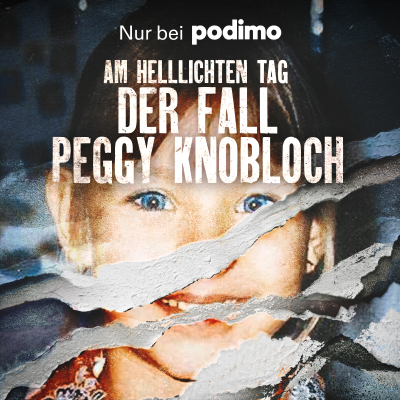

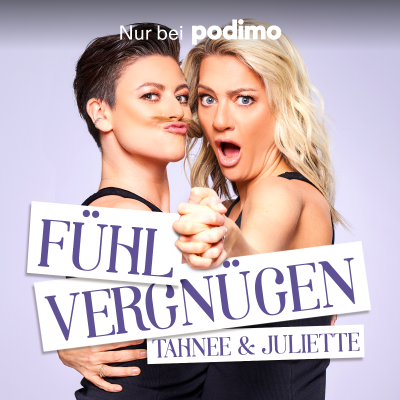



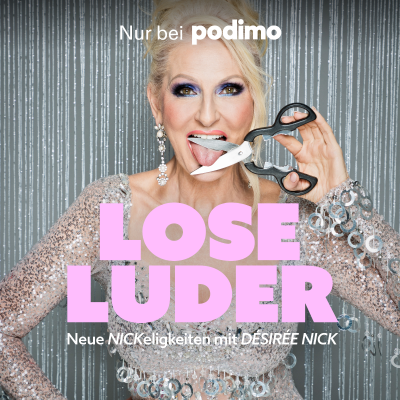




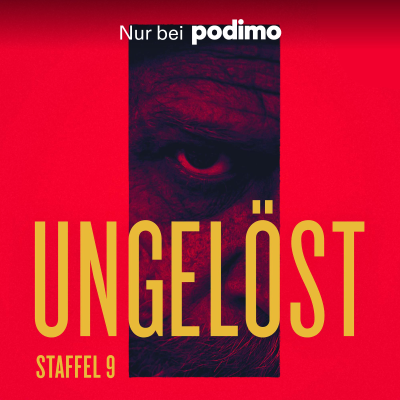
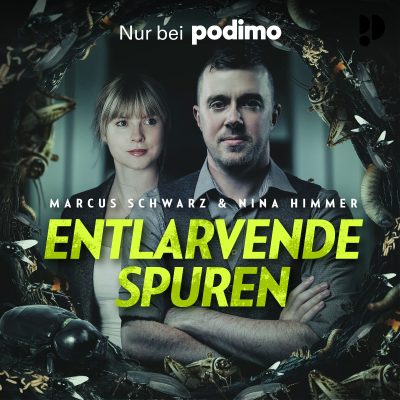






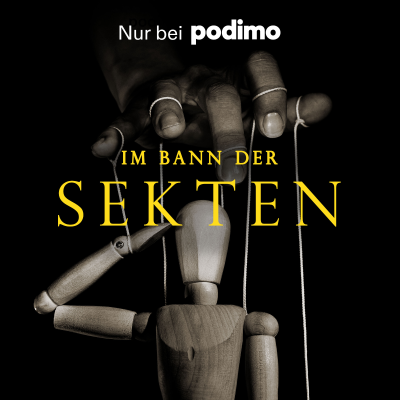






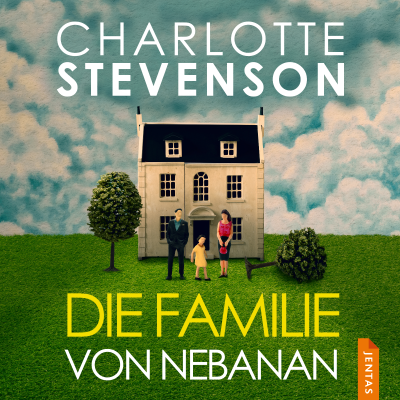
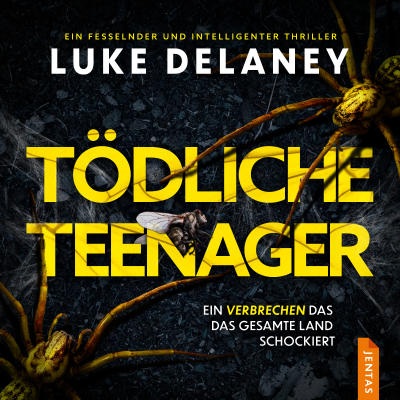





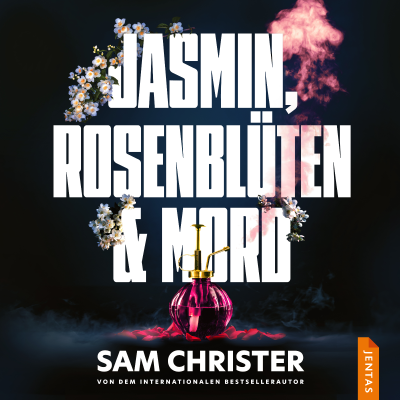
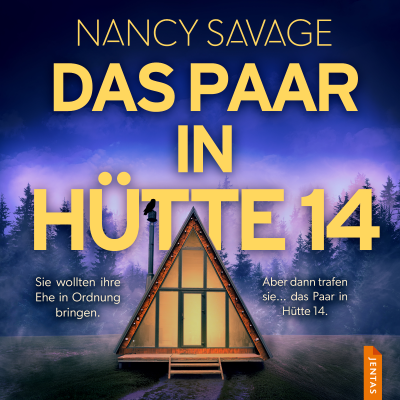


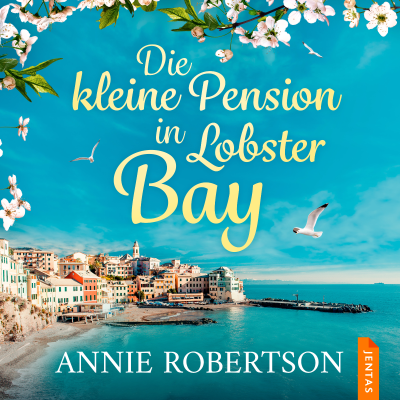
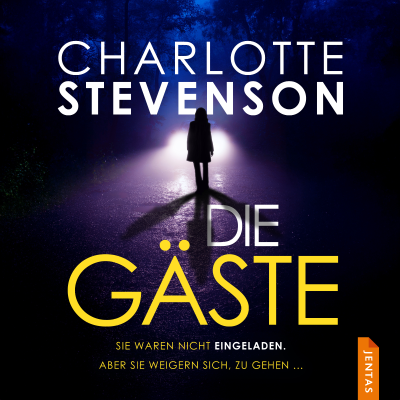
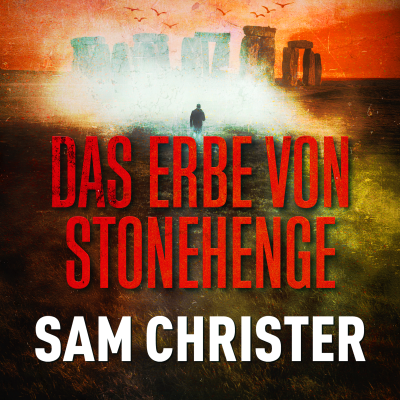

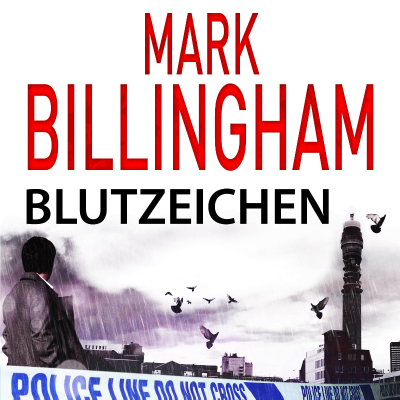
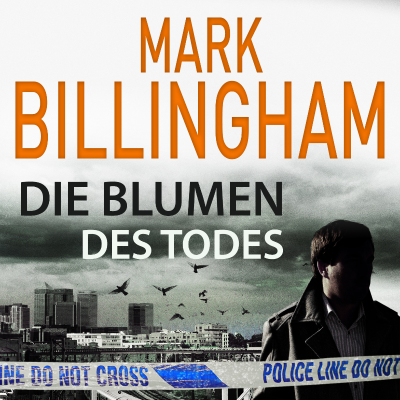
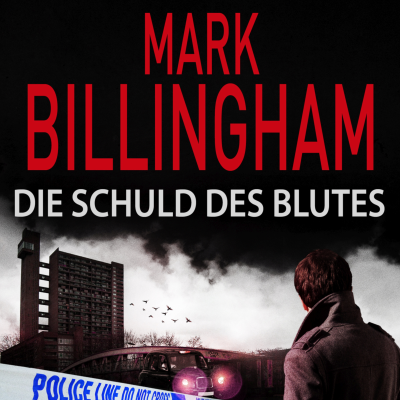
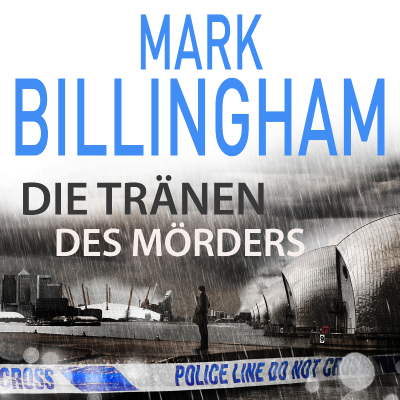
![Schöne falsche Welt [ungekürzt]](https://cdn.podimo.com/images/94ef5516-5cad-447c-a77c-763337e12a35_400x400.png)
